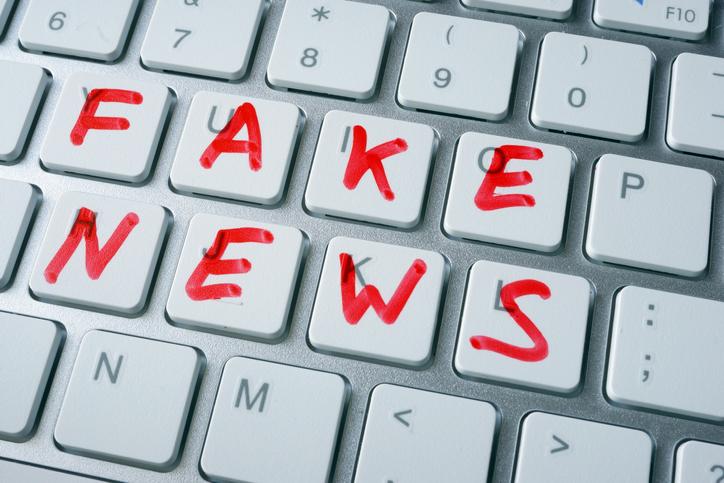- FMA
- The Fabricator
- FABTECH
- Canadian Metalworking
Our Publications
Categories
- Additive Manufacturing
- Aluminum Welding
- Arc Welding
- Assembly and Joining
- Automation and Robotics
- Bending and Forming
- Consumables
- Cutting and Weld Prep
- Electric Vehicles
- En Español
- Finishing
- Hydroforming
- Laser Cutting
- Laser Welding
- Machining
- Manufacturing Software
- Materials Handling
- Metals/Materials
- Oxyfuel Cutting
- Plasma Cutting
- Power Tools
- Punching and Other Holemaking
- Roll Forming
- Safety
- Sawing
- Shearing
- Shop Management
- Testing and Measuring
- Tube and Pipe Fabrication
- Tube and Pipe Production
- Waterjet Cutting
Industry Directory
Webcasts
Podcasts
FAB 40
Advertise
Subscribe
Account Login
Search
Response to fake news about additive manufacturing
Arguing with ‘Dave’ about unfounded, misleading claims regarding 3D printing
- By Kip Hanson
- October 8, 2019
I stumbled across an article in a well-known magazine recently that made me a little ticked off. In this day of attacks against the media and its relentless, even alarming negativity, I’m keeping the names to myself. But the author—we’ll call him Dave—offered numerous comparisons between additive and subtractive manufacturing, concluding in most instances that 3D printing isn’t such a swell idea.
Don’t get me wrong. I’m one of the machining industry’s biggest fans, but this sideways attack on 3D printing left me scratching my head. So I decided to leverage my bully pulpit to offer a rebuttal of these ill-conceived notions and, in a few cases, outright falsehoods found within my fellow journalist’s work.
For starters, there was a comment that 3D printing practitioners have “a very limited list of materials” from which to choose, and because of this, they might be forced to use a Plan B material that will, in turn, decrease part quality. As my great-granddad Helmer used to say, “That’s a load of poppycock!”
Granted, there are literally thousands of metals, polymers, and ceramics available to traditional manufacturers, but there’s certainly no shortage of 3D printing materials—let alone that part quality would suffer because of it.
Dave went on to suggest that designers “might find it cheaper and easier to switch from metal to plastic.” Um, no. Prototypes aside, I can’t imagine a world where a designer who wants to use Inconel, which is readily available to additive manufacturers, would opt for ABS instead. To quote Dana Carvey as George H.W. Bush, “Not gonna do it!”
And speaking of ABS, the author contends that the environment will be damaged due to the increased use of it and other polymers. I agree that pollution sucks, but let me know when the additive manufacturing industry’s impact on Earth exceeds that of the million or so plastic bottles humans use every minute or the damage caused by a single Deepwater Horizon oil spill.
Concerns over energy use were also raised, backed by a study from a leading university. Yes, lasers are power-hungry devices, and who am I to argue with someone boasting a Ph.D. in his or her job title. But I can’t imagine that the energy needed to print a large metal part compares to that of pouring an even more massive casting or billet, followed by dozens of machining operations.
Furthermore, thanks to generative-design software and its ability to create strong but lightweight part geometries, 3D printing uses far less material and generates less waste than conventional manufacturing practices.
Dave brought up one legitimate concern—something to which I hadn’t given much thought—the tendency of desktop printers to create ultrafine airborne particles and other hazardous compounds. Excellent point, although any machinist who’s come home with a sore throat from inhaling cutting fluid mist all day will tell you this problem is easily solved: Get yourself a Smog-Hog.
I know Dave has good intentions, and, like me, he’s only trying to make a buck. Still, I get a stomachache from unfounded disparagements of 3D printing, an essential technology—one that I feel will impact huge chunks of the manufacturing industry overall.
Anyway, Dave’s article was a two-parter, and I’ve got more to say about his reporting of fake 3D printing news. So stay tuned for Part 2 of “Arguing with Dave.”
About the Author

Kip Hanson
About the Publication
- Podcasting
- Podcast:
- The Fabricator Podcast
- Published:
- 04/16/2024
- Running Time:
- 63:29
In this episode of The Fabricator Podcast, Caleb Chamberlain, co-founder and CEO of OSH Cut, discusses his company’s...
- Trending Articles
- Industry Events
16th Annual Safety Conference
- April 30 - May 1, 2024
- Elgin,
Pipe and Tube Conference
- May 21 - 22, 2024
- Omaha, NE
World-Class Roll Forming Workshop
- June 5 - 6, 2024
- Louisville, KY
Advanced Laser Application Workshop
- June 25 - 27, 2024
- Novi, MI



























